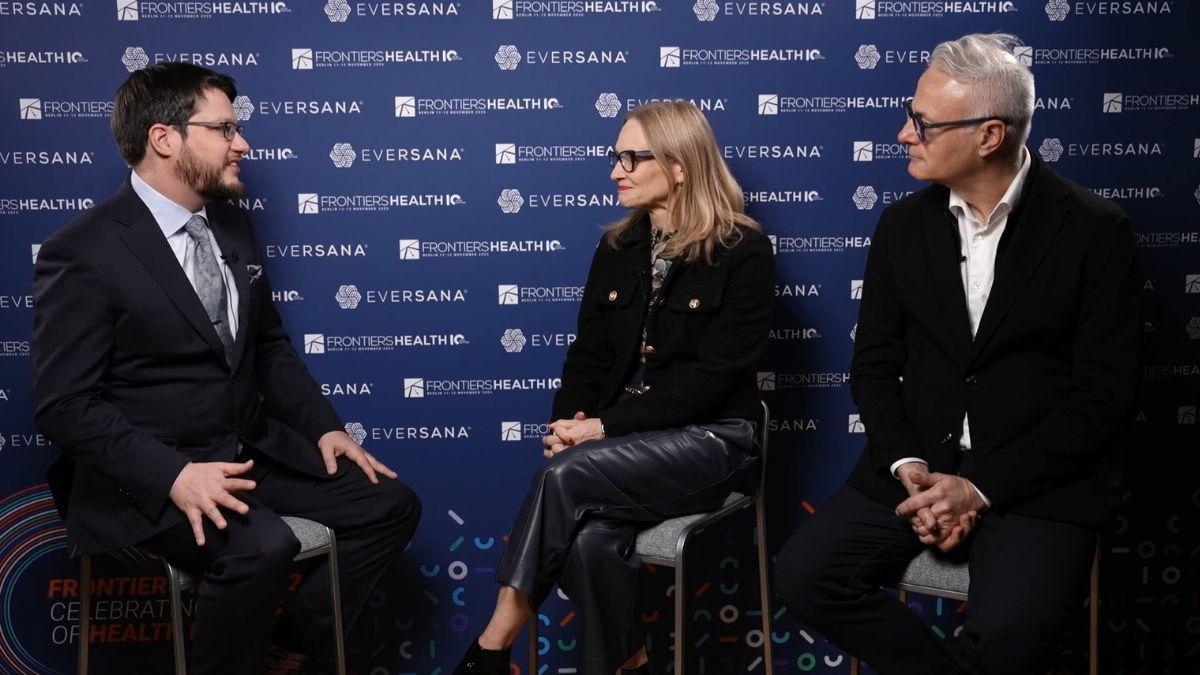Disrupt or be disrupted, experts warn pharma

Pharma is playing catch-up with digital technology – but in this age of big data and AI, there are benefits to adopting it to help engage with clients. Richard Staines attended pharma IT firm Veeva’s annual commercial and medical summit in Madrid to find out more.
Pharma is still set in its ways with use of digital technology when engaging with customers, although some visionaries are helping to transform their companies. More than 1,000 representatives of 130 pharma and medtech companies heard examples of the latest in best practice on digital innovation in customer engagement. A range of support functions can be transformed with digital technology, and now is a good time to start making changes – before those changes are enforced by external pressures.
In a keynote speech, Vani Manja, global head of GTM transformation and business steering from Boehringer Ingelheim, warned that tech companies without backgrounds in pharma could begin to compete for business, using their technological know-how to disrupt the market. Like many in the industry, Manja is concerned about whether newcomers such as Google and Amazon will be able to challenge conventional pharma companies.
Manja said: “There are people who are looking to disrupt us. They are going to disrupt us by focusing on the customer and doing things that understand the needs of the customer.”
Transforming commercial data warehousing
As Matt Wallach, president and founder of Veeva, said in a plenary address, AI is becoming a reality – it is an exciting time, and there is huge potential. But AI is not magic. It is advanced statistics and algorithms that are fed by data – and that data needs to be clean, current, and organised.
Wallach said: “Even though many pharmas have organised their engagement and content, their data is not yet organised. And we see this as the single-largest impediment to getting value from your data through reporting, analytics and, ultimately, AI. What is holding pharmas back is their commercial data warehouse; in 20 years in this business, I’ve never met a customer that is happy with their commercial data warehouses. With AI, we are turning the data warehouse from an unending construction project to a cloud software project.”
But big pharma is starting to wake up – several speakers described proactive measures and best-practice examples in a range of functions across pharma.
Amy Landucci, global head of consumer and healthcare IT at GlaxoSmithKline, said the company had integrated a digital integration hub into its operations. The company recognises that using big data will change the way it interacts with clients.
Landucci said: “The future of customer engagement is personal. It is data driven – it can’t be personal if you don’t have the data. It can’t be personal at the level we need it to be.”
There were some powerful examples of how companies are using digital technology to transform customer relationships. Veeva’s vice president of strategy for commercial applications, David Bennett, told a briefing with journalists at the event that uptake of digital technology in the marketing function is patchy across pharma. Some companies are held back by “colossal inefficiencies” because they are still reliant on older platforms that are difficult to link – sometimes with one part of the company using a different system to that of another.
This makes marketing approval a cumbersome and expensive process, and it is made even more complicated by issues such as getting the medical information translated.
Landucci continued: “They put it into an approval process which isn't connected to their digital asset system. They have regional silos, so they distribute it out to other countries, so they have copies of it in different places. And then they try and get it into the different channels from all these other different places.” The material in question is not just written – it includes photographs, logos and multimedia content that is used in interaction with prescribers.
There is a need for systems that can handle all of these kinds of content and allow it to be approved to ensure it is compliant with market regulations.
Cutting agency spend
Shire’s senior executive for global compliance and advertising and promotion, Ian Hale, said the company is trying to cut costs in marketing by using a centralised system to ensure marketing is more joined up and efficient across the global organisation.
Before rationalising its marketing with digital technology, Shire used around 1,500 marketing agencies globally to promote its products. Hale wants to cut this figure to around 40, saving cost and bureaucracy while improving quality, by using a single piece of software as a one-stop shop for the company’s marketeers across the world.
Shire can approve all forms of content centrally and drop it into electronic folders for each country through a “brand portal”. This ensures that the content produced by agencies on Shire’s preferred supplier list is controlled by the company’s compliance function and preapproved, ready for use in each country.
There is a reduced need for the expensive to-ing and fro-ing between the company and agencies over small details. Complaints can be dealt with quickly by removing the information from the system at the touch of a button.
Hale explained: “You're the marketeer. Where do you want to go for the most up-to-date information? Bang, there it is. You want the latest press release? That's where it is.
“It's like having a tray of goodies that you've got, preapproved in your country.”
All this has already allowed Shire to cut the number of agencies it uses by 50% in the 117 different countries where it operates.
Family friendly
Other digital strategies discussed at the conference included Pfizer’s adoption of a virtual link with healthcare professionals (HCPs), which allows reps to connect and share fully approved digital content from a remote location. Results from a pilot market included average call time of approximately 18 minutes, which reflected increased time with HCPs compared to that of face-to-face calls with the same customer group.
Ryan Birch, global alignment, segmentation and targeting lead, said: “There is also a positive impact on the environment. Hard-to-reach HCPs can be contacted remotely, enabling colleagues to spend less time on the road and more time at home with their families. In the pilot, over 68,000 miles were saved by contacting HCPs remotely.”
A speaker from a German pharmaceutical company summarised the sentiments of those attending the conference accurately – and fittingly – by using a video link from his office to patch into a meeting to discuss multichannel marketing. He warned against complacency and urged pharma to adopt new technology to get ahead of the curve.
He said: “If one of the regulators is going to change their approach, the whole industry will have to transform overnight. They will be running after business.
“We are putting ourselves on a safety cushion, but there is going to be significant cliff.”













